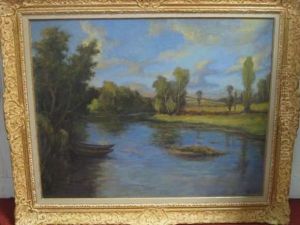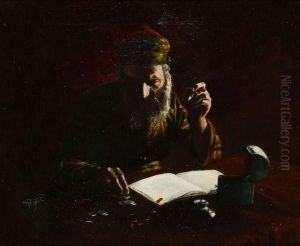Albert Dakin Gihon Paintings
Albert Dakin Gihon was an American artist born in 1874, whose career spanned the late 19th and early 20th centuries, a period of significant transformation in the art world. His work is less widely known compared to some of his contemporaries, but Gihon contributed a unique voice to the American art scene, particularly through his watercolors and oil paintings. His artistic journey began in an era dominated by realistic representations, but it eventually embraced the emerging impulses of Impressionism and Post-Impressionism, reflecting the broader shifts in Western art of the time.
Throughout his career, Gihon was deeply influenced by his travels and the places he lived, including significant periods in Europe, where he was exposed to the forefront of artistic innovation. This exposure is evident in the evolving style of his work, which shows a keen interest in capturing the effects of light and color, hallmarks of the Impressionist movement. Despite facing the challenges of working in a competitive and rapidly changing art world, Gihon managed to carve out a space for himself, particularly through his landscapes and scenes of everyday life, which often depicted the beauty he found in the mundane and the ordinary.
Gihon's dedication to his craft was reflected in his participation in various art communities and exhibitions throughout his life. He was active in several art organizations, where he both contributed and drew inspiration from his peers. His work was exhibited in numerous galleries and shows, receiving recognition for its vibrant quality and emotional depth. Unfortunately, Albert Dakin Gihon's life was cut short when he died in 1923, but his artistic legacy lives on through his contributions to the American art scene of his time, offering insights into the transitional period of art from the 19th to the 20th century.







